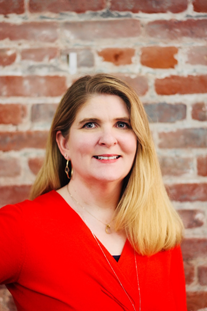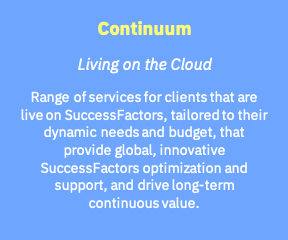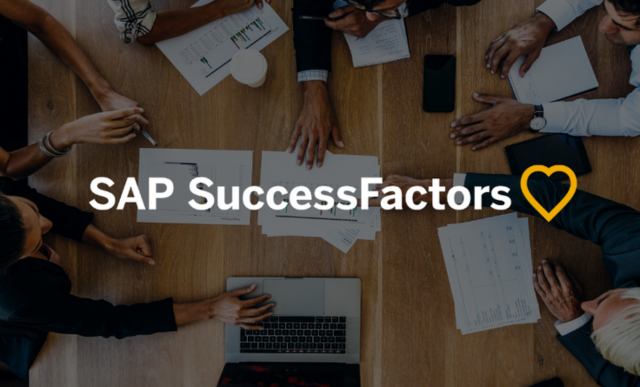SAPinsider Q&A: A Chat with New SAP SuccessFactors Head of Product Meg Bear
Bear shares her thoughts on how HR can reinvent work experiences in ways that will accelerate business growth
Over the last several years, human capital management (HCM) solutions have been evolving to integrate technologies like artificial intelligence, machine learning, and more recently, experience data (X data) in an effort to offer human resources (HR) leaders a better understanding of employee engagement and the ability to generate greater strategic insights from their data.
For SAP SuccessFactors, this shift from HCM to human experience management (HXM) is not just a change in verbiage. It is a product roadmap and cultural evolution that signifies a shift away from the treatment of employees merely as an asset. In discussing the importance of HXM at the recent SuccessConnect event, SAP SuccessFactors president Greg Tomb pointed out that companies that focus on employee experience have 17% higher productivity and three times more revenue per employee, which are numbers that should make HR leaders take notice.
To help navigate the product direction in a way that maximizes business results for customers, SAP SuccessFactors recently appointed Meg Bear as head of product. Bear joined SAP SuccessFactors from Juvo, where she was senior vice president of product and engineering. Her charter at SAP is to develop the next generation of SAP SuccessFactors solutions that will empower customers on their HXM journey.
SAPinsider recently sat down with Meg Bear for a Q&A about HCM, HXM, and the role intelligent technology will play in future solution roadmaps.

Meg Bear, Head of Product, SAP SuccessFactors
You are joining SAP SuccessFactors at a time when HR technology is evolving faster than ever before. What are some of the most important things you hope to accomplish in your first six months in your new role?
Bear: I am fortunate to be joining SAP at a time where there is a tremendous focus on the future of our solutions. I am really very excited about our HXM vision and our overall strategy. Over the next six months, SAP SuccessFactors has some pretty lofty goals that were set out at SuccessConnect. Those include advancing our architecture to help us with our move to a hyperscale public cloud on the operational side, and our UX Reimagine efforts to deliver a more modern and interactive user experience.
Those are the big things SAP SuccessFactors will be focused on over the next six months and beyond. My background provides me with a unique insight into the entire product lifecycle and has led to my strong belief that investment in architecture not only sets you up for realization of product vision, but also gives you the ability to more rapidly take advantage of new technology trends. In my first six months, I plan to deliver on the HXM vision while, at the same time, helping people see where that vision is really going to take us.
There has been a lot of buzz around the evolution of human capital management (HCM) into human experience management (HXM) since Greg Tomb announced it at SuccessConnect. Why is the employee experience so important to the future direction of SAP SuccessFactors solutions?
Bear: HXM speaks to where global business is going and to the future of work. External forces are affecting business today, and when coupled with new ways of working, the need for more agility in the HR function becomes apparent. For technology to deliver the type of impact the business needs, we can’t just serve the back-office functions of HR and we can’t just think about people as assets. We have to engage people in entirely new ways to deliver the results for the business. That’s why the HXM vision is so critical to the future of the HR function. It is the realization that worker experiences drive business.
To be impactful against these dynamic business forces, HR is going to have to adopt a much more agile mindset. We will need to deliver programs to the business in a more iterative manner, and we will need the ability to take feedback loops from employees to continue to drive results. These ideas and technologies can no longer be defined in a back office and then rolled out around the organization over three, four, or five years. It has to be an ongoing process that evolves as the business conditions evolve.
HXM requires us to become agile with the entire workforce, so we can deliver for the needs of the business as they change.
In what ways do you see newer technologies like artificial intelligence and machine learning contributing to the development and growth of the entire solution portfolio at SAP SuccessFactors?
Bear: When you think of the trajectory of HR technology, the original focus was on capturing transactions so we could more effectively complete operational business tasks. But with the advances in technology today, we have the ability to think more multi-dimensionally. Combining X data with operational data (O data) gives us an opportunity to use technology to make things easier, to automate tasks that were cumbersome in the past, and to help drive the kind of behavioral changes and agility that are needed for business today.
SAP SuccessFactors is taking advantage of these opportunities today and in our upcoming releases, with features like conversational user experience and automation that help to screen large volumes of candidates and match opportunities with people both inside and outside your organization. Over time, as you get tighter and tighter feedback loops with data, you can imagine that the opportunities to improve processes and increase value for the organization – not just the HR department – are almost limitless. Technology is an enabler to bring forward the future of work, against that agile multi-dimensional, heavily demand-driven business landscape.
Doesn’t this strategy also open the door for a fast-growing partner ecosystem to add innovation and even more intelligent solutions to the SAP SuccessFactors solution suite?
Bear: Yes, absolutely. The other way that we are looking at technology and our architectural investment is exactly for that purpose. As we bring forward a more modern platform, we are not just doing this for our own internal efficiencies. We are also investing for ecosystem efficiencies. We want to be able to partner more deeply and more easily across the ecosystem because we realize that added innovation from our partners is going to be a great benefit to our customers.
How do you prioritize and build a product roadmap that keeps pace with technology and market demands without making some legacy or on-premise customers feel like they are being left behind?
Bear: When you have great customers that have been with you for a long time, you need to be able to support them wherever they are on their technology journey. As we innovate, we are always thinking about how our architecture can help us make technology available to our customers how and where they want it. We also want to support those customers that have part of their overall product portfolio on premise and part in the cloud. We need to help our customers meet the demands of business today while future-proofing them for the demands they will face 10 or 15 years from now. At the same time, our product roadmaps – and the investments we are making in architecture – are directly intended to address “consumability” of that innovation and to help our customers benefit from it regardless of their current technology landscape.
Speaking of roadmaps, in your opinion, does a product roadmap drive customer adoption or do customer adoption trends drive a product roadmap?
Bear: It’s our job to look at new trends and to perform research against what we are starting to see in terms of technology, business, and changing workforce demands. We must always think about how we can incorporate this research into consumable capabilities for our customers, but we can’t simply innovate against the problems they are seeing today. At SAP, we are planning for the long run with our customers. We want to help them achieve their business objectives for decades, not just months. We are focused on building trusted relationships so that as our customers identify new needs, we are evolving with them and making that innovation available to them as quickly as possible.
In your opinion, how will HXM support the ability of CHROs’ to achieve their strategic goals over the next 5-10 years?
Bear: By incorporating X data, HXM allows HR leaders to have greater insight into which of their key programs are working, a better understanding of the health of the overall employee population, and a more accurate view of how individual programs are being perceived at the employee level. So, for example, whether it’s innovating benefits packages to meet the changing needs of the workforce, creating career development plans that address employee needs at different levels, or helping grow the different skills that are critical to the business – getting the kind of data-driven feedback that HXM provides can help CHROs demonstrate the results of their work in a more comprehensive way. It helps them be more strategic and innovative and more effectively plan for future programs.
What should SAP SuccessFactors customers be doing today to prepare for HXM in their organizations?
Bear: In a broad sense, customers should be looking at the skillset of the HR business partners to ensure they are starting to build up skills that have agile capabilities, like problem solving, data literacy and program creation. It’s important that HR knows how to connect with business leaders to understand what their needs are, and how they can deliver the results of their programs. Where do leaders need to grow their business or what kind of locations and staffing do they need to support their plans? With SAP Qualtrics and SAP SuccessFactors, we can provide information about what is working and what isn’t working. But building the skills needed to use that information – to assess, propose, and make changes across the company – that’s where customers need to start planning and skill building.
What are some lessons learned from your previous roles at Juvo, Imperva, Oracle, and others that you feel will help make you successful at SAP SuccessFactors?
Bear: I am driven by the concept of change-based innovation, using market change, technology change, and business change to think about problems differently. So, I am fortunate that I have been able to think about and experience change across several industries and several technology frameworks – cybersecurity at Imperva, enterprise software at Oracle, and data science and financial inclusion products at Juvo. I plan to use the knowledge of what’s happening in these other sectors and bring it to the HCM discipline. Having spent some time outside of HCM observing the innovation that is happening, what I am most excited about is taking what I have seen in customer experience, and in data and machine learning, and bringing that set of ideas into how we think about HXM at SAP SuccessFactors. I am excited to see how my experience can help make things better for the most important part of any business – the people.
What Does This Mean for SAPinsiders?
Bear’s hiring comes at a time when experience and intelligent technology are driving both the future roadmap of SAP SuccessFactors solutions and the future of work. Her background at companies like Juvo and Oracle and her focus on technologies that drive change appear to be a great fit for the HXM era that SAP SuccessFactors is entering. To stay current with the trends and to prepare for future product innovations, SAPinsiders should:
-
- Evaluate intelligent technology. Not all customers are ready to embrace artificial intelligence or machine learning, but customers at all maturity levels should begin to assess existing functions to identify those processes where intelligent technologies would provide the greatest value. Business processes like recruiting and learning are two areas where technology is already making a difference.
-
- Embrace the role experience plays in driving employee engagement. The next year or two will bring greater integration between SAP Qualtrics and SAP SuccessFactors that will open up new opportunities for customers to measure, act on, and improve the employee experience.
- Identify the skills HR will need to support the business as technology changes. As Bear mentions, HR leaders need to focus more heavily on leveraging technology to meet the needs of the business to deliver results. For many in HR, the shift from a transactional to an analytical mindset will require not just technology but also the ability to analyze data and trends across the business.








